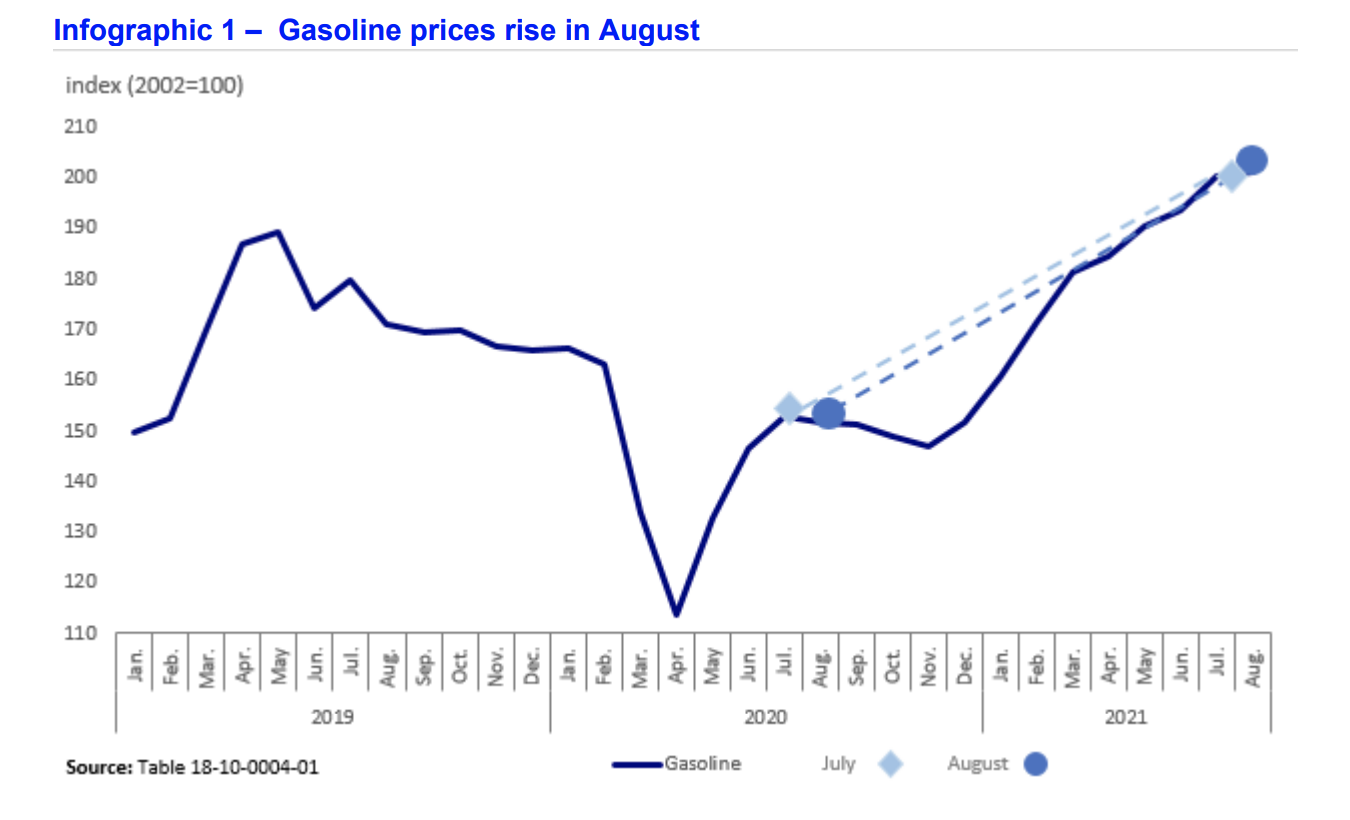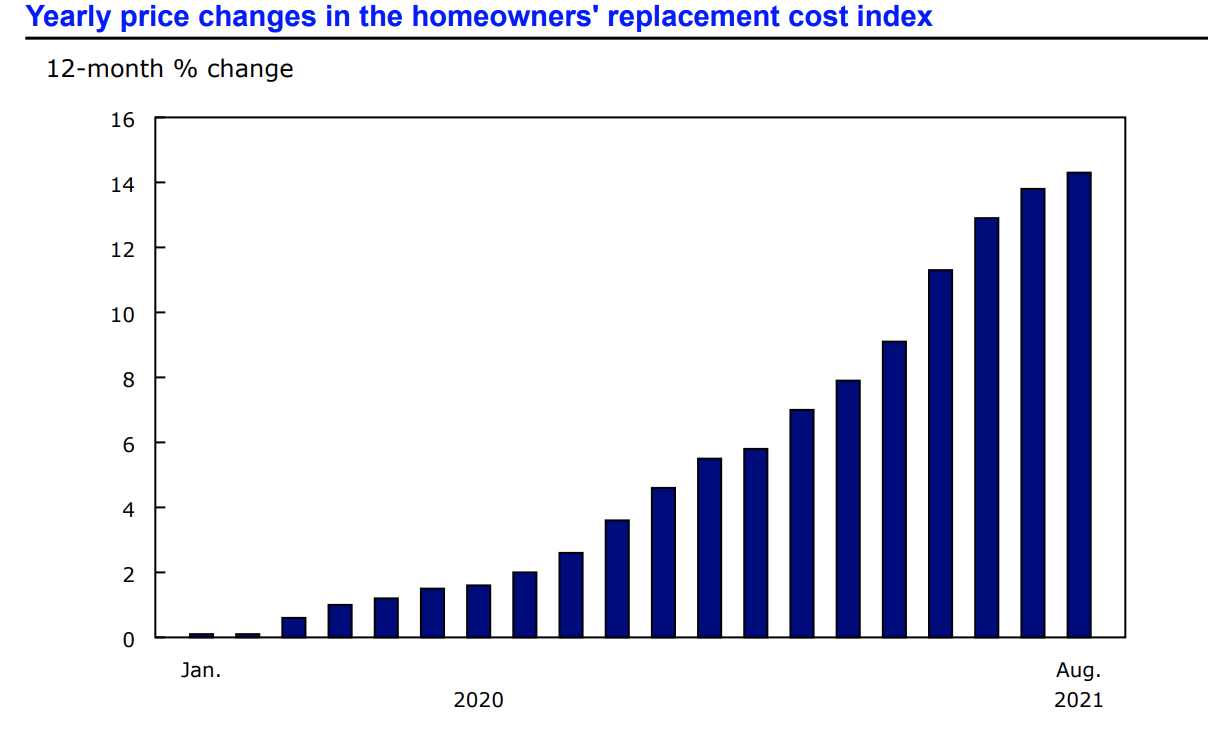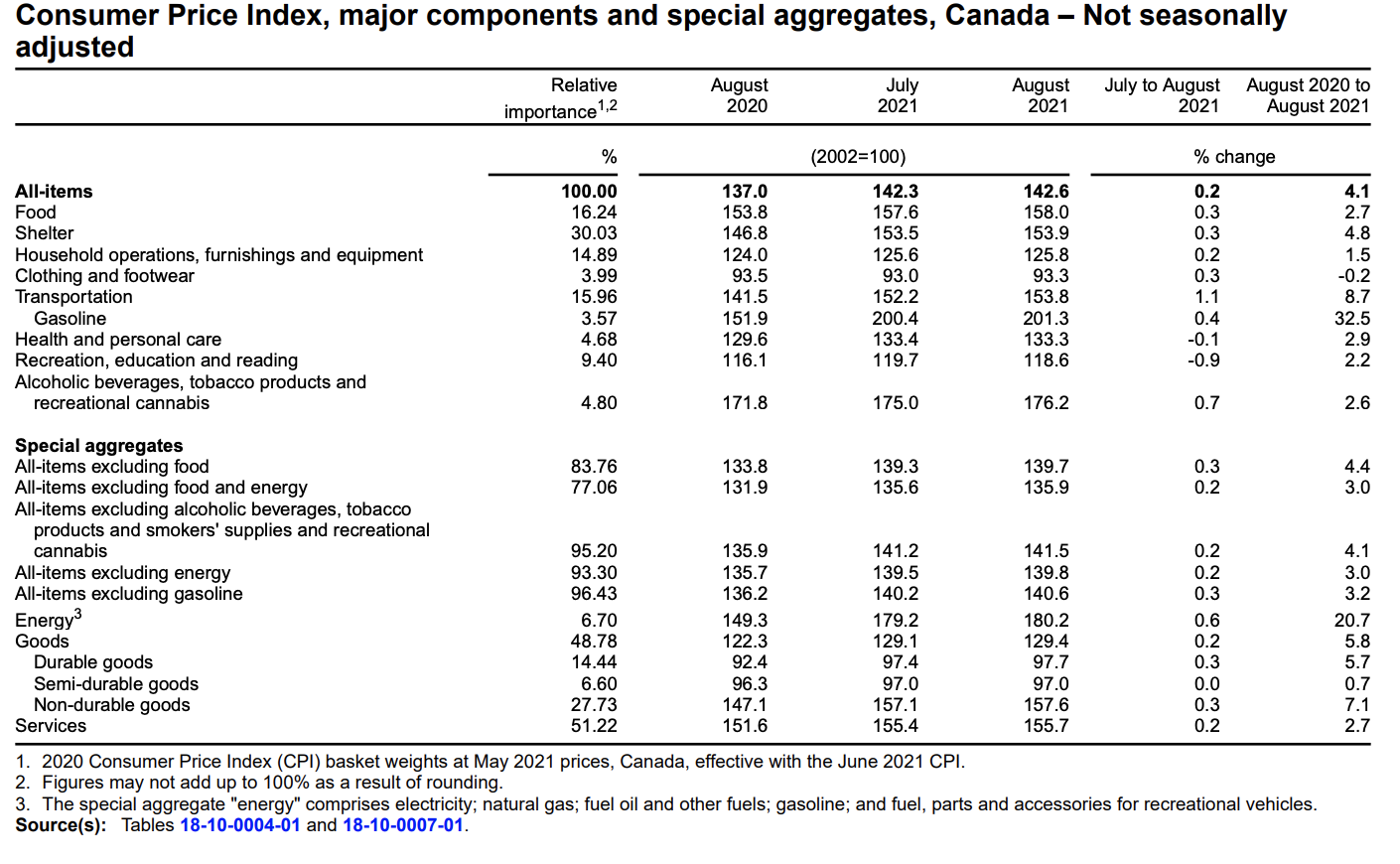The Consumer Price Index edged up 4.1% in August, on a year-over-year basis, reported Statistics Canada. This marks a percentage gain from the 3.7% rise in July.
“Since the onset of the COVID-19 pandemic, durable goods have been a major contributor to the increase in the CPI. Durable goods rose at a faster pace in August (+5.7%) compared with July (+5.0%), with passenger vehicles (+7.2%), furniture (+8.7%), and household appliances (+5.3%) contributing the most to the increase.
In addition, prices for services have accelerated for the fifth consecutive month, rising at a faster pace in August (+2.7%) compared with July (+2.6%) amid easing of COVID-19 restrictions. Year over year, prices for traveller accommodation rose 19.3%. Reopening of businesses and summer travel contributed to the price increases.
Prices rose in seven of the eight major components in August, with transportation prices contributing the most to the all-items increase. Conversely, consumers paid less for clothing and footwear, as prices declined year over year,” stated the agency.

(Source: Statistics Canada)
Gasoline Index
In August, the price of gas increased 32.5% since this time last year. Additionally, on a month-over-month basis the gasoline index also saw a percentage increase of 0.4%.
“Upward pressure on prices near the end of the month—as some offshore production was suspended due to Hurricane Ida—was partially offset by slowing global demand due to concerns associated with the rise of the Delta variant of COVID-19,” explained Stats Can.

(Source: Statistics Canada)
Homeowners’ Replacement Cost Index
The homeowners’ replacement cost index, which is correlated to the price of new homes, saw the largest annual increase in over thirty years.
“The homeowners’ replacement cost index, which is related to the price of new homes, continued to trend upward, rising 14.3% year over year in August—the largest yearly increase since September 1987. This was the fourth consecutive month of double-digit price growth.
Similarly, the other owned accommodation expenses index, which includes commission fees on the sale of real estate, rose 14.3% year over year in August,” explained the report.
Food Index
Over the last 12-month span, the food index increased 2.7% since August of last year. Statistics Canada released a statement pertaining to the effects of the COVID-19 pandemic specifically on the price of meat.
“Year over year, prices for meat products rose at the fastest pace in August (+6.9%) since June 2020 (+8.1%). Prices for fresh or frozen chicken were up 8.4%, partly based on higher input costs and growing demand from restaurants. Prices for fresh and frozen pork also increased on a year-over-year basis in August (+9.3%), mainly the result of higher input costs and supply chain issues.”

(Source: Statistics Canada)
Statistics Canada released a statement apropos of the effects of the COVID-19 pandemic on the CPI.
“Since April 2020, goods and services in the Consumer Price Index (CPI) that were not available to consumers due to COVID-19 restrictions received special treatments, effectively removing their impact on the monthly CPI. When a good or service became available for consumption again, an adjustment factor was calculated to remove the impact of imputations so that the indexes only reflect observed price movements. More information on these adjustments can be found in the March 2021 Technical supplement.
With the easing of COVID-19 restrictions and the availability of vaccines, Canadians are able to consume travel services to most destinations, including in the Southern and Asia-Pacific sectors, which accounted for 0.07% of the 2020 CPI basket, and certain components of travel tours, which represented 0.46% of the 2020 CPI basket. With the August CPI, these services are no longer being imputed and adjustment factors are being applied. The August index levels for these components of the air transportation and travel tours indexes are obtained by comparing August 2021 and the last observed prices in 2020. This procedure removes the impact of all imputations performed in the months where these services were not available for consumption.
This treatment corresponds to the approach used for the re-introduction of seasonal products in the CPI in the first month of their in-season period.
The headline CPI for August 2021 would have been the same with or without the re-introduction of the components for travel tours and air transportation. Users are advised to exercise caution in interpreting the 1-month change for August 2021 and the 12-month change for the next 12 months for the travel tours and air transportation indexes.
In August 2021, all special treatments for unavailable items were removed with the exception of cruise-based travel tours, accounting for 0.03% of the 2020 CPI basket. Statistics Canada will continue to monitor the impacted component and will remove these special treatments as it becomes widely available for consumption.
The details of the treatments from April 2020 to March 2021 are provided in technical supplements available through the Prices Analytical Series. Details and other treatment information for April 2021 to August 2021 are available upon request.
Statistics Canada continues to work with price experts, national statistical organizations and other partners to ensure the data and methods used in the calculation of the official CPI are aligned with international standards.”
Source cited: https://www150.statcan.gc.ca/n1/daily-quotidien/210915/dq210915a-eng.htm


